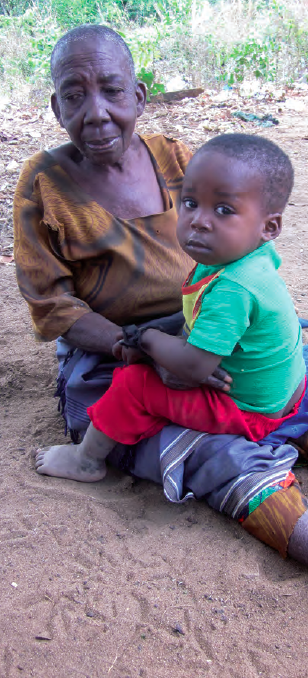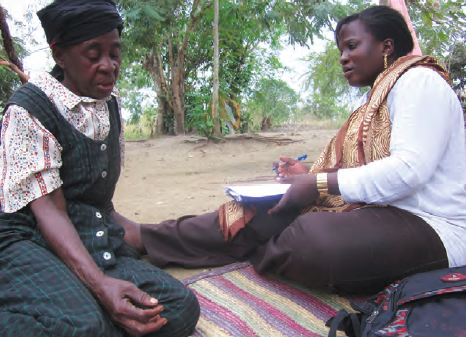Rapid Assessment Method for Older People (RAM-OP): Progress Report
Summary of online field article1
This article presents a summary of an online Field Exchange article that details field testing and other ongoing development work on the Rapid Assessment Method for Older People (RAM-OP).
 The first field trial of the RAM-OP method was undertaken in Addis Ababa (Ethiopia) in early 2014. This trial was reported in a previous Field Exchange article.2 Testing involved performing two surveys using the SMART method and a prototype of the RAM-OP method simultaneously in the same population and comparing the two surveys in terms of resource requirements, estimates of indicator levels, and the precision of estimates. The results of this trial informed the design of a second trial.
The first field trial of the RAM-OP method was undertaken in Addis Ababa (Ethiopia) in early 2014. This trial was reported in a previous Field Exchange article.2 Testing involved performing two surveys using the SMART method and a prototype of the RAM-OP method simultaneously in the same population and comparing the two surveys in terms of resource requirements, estimates of indicator levels, and the precision of estimates. The results of this trial informed the design of a second trial.
The second trial was undertaken in a coastal district of Tanzania in August and September 2014. This trial also compared RAM-OP and SMART simultaneously in the same population. The SMART survey method followed published guidelines. The first stage sample size for RAM-OP was reduced from twenty to twelve clusters and a within community sample of sixteen older people was taken using systematic sampling of dwellings in the villages (or parts of villages) organised as ribbons of dwellings and a random walk (EPI3) sampling strategy in villages (or parts of the villages) organised as clusters of dwellings. The EPI3 method selects the first household to be sampled using the EPI strategy (as with SMART) with subsequent households selected by choosing a random direction and selecting the third nearest house in that direction. This sampling method has been shown to give results as good as simple random samples and to be better than the unmodified EPI strategy when a wide range of indicators is being assessed.
Both trials found that SMART and RAM-OP are functionally similar methods (i.e. the two methods return similar results) and that the RAM-OP method was considerably cheaper than the SMART method. Precision of RAM-OP in the second trial remained useful but was a little worse than that achieved by the SMART survey in the same population. This could be remedied by increasing the size of the first-stage sample (i.e. to sixteen clusters) whilst decreasing the size of the second-stage sample (i.e. to twelve older people) without increasing survey costs for RAM-OP much above about 50% of an equivalent SMART survey.
The online article3 describes key elements of the RAM-OP method, presents the results of the second trial, compares the results of the two field trials, and describes other ongoing RAM-OP development work.
Footnotes
1See the full article at: http://bit.ly/1WEKcQt
2Pascale Fritsch, Katja Siling and Mark Myatt (2015). RAM-OP: A rapid assessment method for assessing the nutritional status, vulnerabilities, and needs of older people in emergency and development settings. Field Exchange 49, March 2015. p67. www.ennonline.net/fex/49/ramop
3See footnote 1



